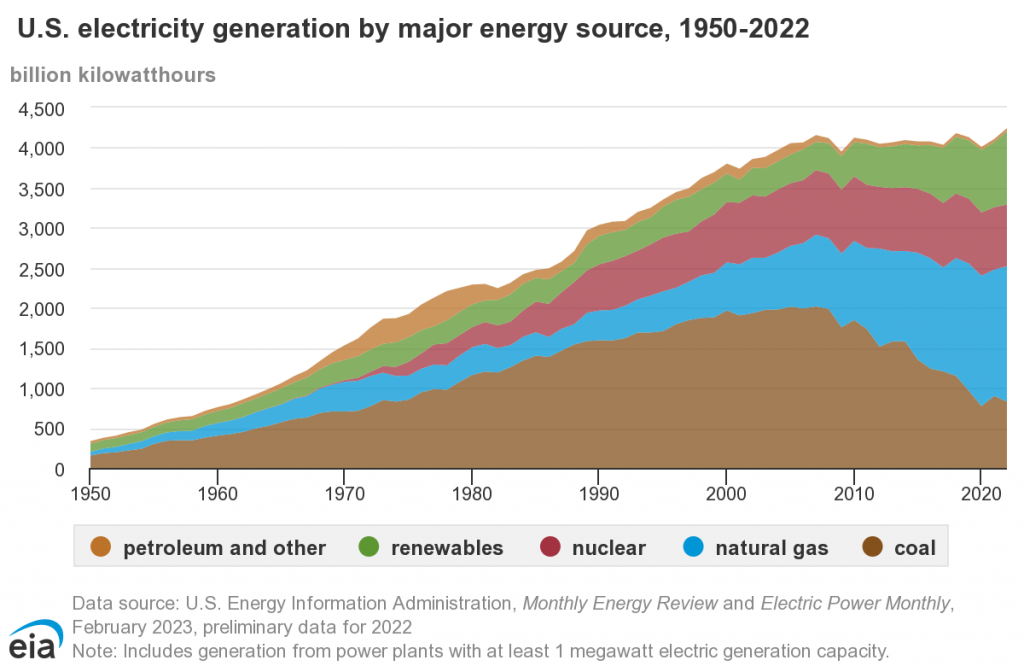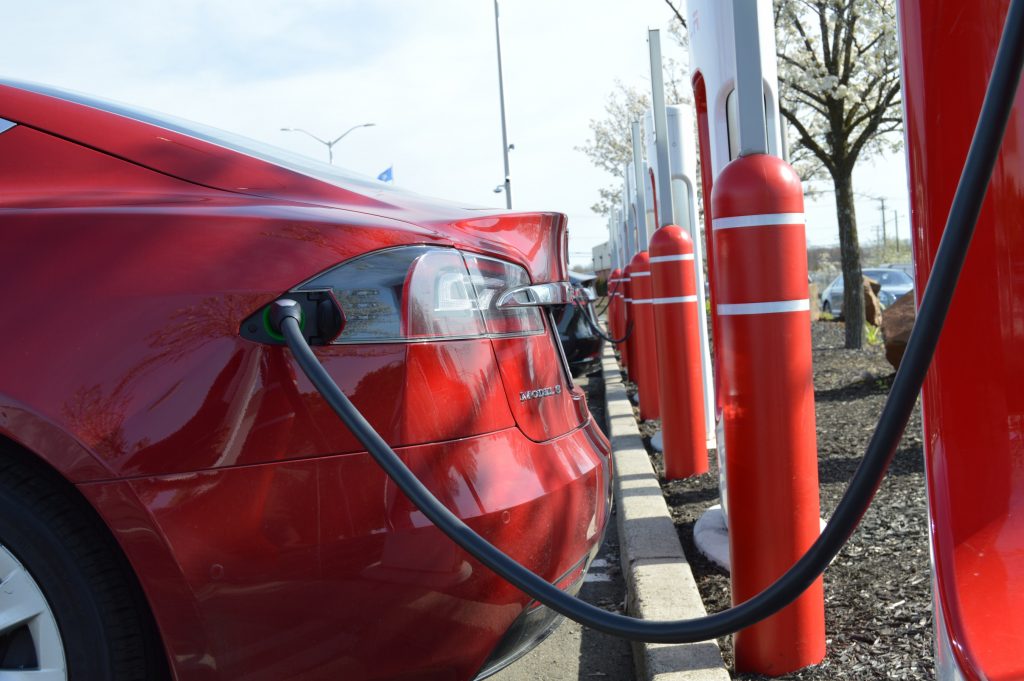Climate issues can be difficult to understand. This series is designed to deliver you what you need to know about some of the most prevalent issues in climate policy today. In 1,000 words, let’s learn how the electric grid works—and how electric vehicles fit into the conversation.
This article is written by Kaleigh Pitcher, a Policy Consultant at Save the Sound, working primarily in climate and environmental justice advocacy. She has a Master’s of Public Policy with a focus on Health and Social Policy from the University of Connecticut.
What is the electric grid? At its simplest, the grid is an interconnected system of power stations, substations, and transmission/distribution wiring that delivers electricity to consumers. This encompasses everything from the circuit breaker panel in your house to the wires strewn between poles to the power plants themselves.
How are electric grids powered? About 60% of electric generation comes from the heat rendered from the burning of coal or natural gas, which is then used to generate steam to drive turbines and create electricity. This means that electricity is not necessarily a clean power; rather, it depends on how the electricity is generated.
In the last two decades, there has been a rise in clean energy-generated electricity through renewables including wind, hydro, and solar power. In 2022, renewable resources represented just over 20% of American electricity.

The emissions produced from electricity generation vary based on its energy source. Coal and natural gas make up a staggering 98% of CO2 emissions associated with electricity generation. Petroleum makes up 1%, and all other forms of generation comprise less than 1%. So while renewables produce about 20% of electric generation, they account for almost no emissions.
Carbon intensity measures the CO2 output of electricity generation. Compared to other states, Connecticut and New York have far lower carbon intensity, ranking 40th and 41th respectively for pounds of CO2 emitted per megawatt hour (MWh) in 2022. That year, New York emitted 476 pounds/MWh, while Connecticut emitted 506 pounds/MWh. For comparison, West Virginia, the state with the highest carbon intensity, emitted 1,947 pounds/MWh. Depending on this metric, electricity emissions can vary wildly from state to state. And while New England generally has lower carbon intensity than the rest of the country, there are still emissions associated with electricity—but this can be improved by modernizing the electric grid.
How can the electric grid be modernized? Improving the grid can be done primarily in two ways: (1) transition to clean energy generation to reduce greenhouse gas emissions, and (2) improve energy management.
The first can be achieved by investing in renewable resources for electric generation, as these produce significantly fewer emissions. There has been a concerning trend of rising energy-sector emissions in the U.S. over the last three years. From 2020 to 2021, there was a 6% increase in national energy-related CO2 emissions, followed by a 0.8% increase the following year. This increase comes after a steady drop since 2007. The Energy Information Administration attributes this to an increase in demand and generation from fossil fuel plants.
Currently, Connecticut’s Public Utilities Regulatory Authority (PURA) offers the Innovative Energy Solutions Program, which seeks innovative clean energy solutions in order to decarbonize the state’s electric grid. At the state level, voters can lend their support to cleaner alternatives to the fossil fuels that generate the majority of the country’s electricity.
Improving energy management means balancing available power to avoid overloads. This can be done in a variety of ways, including:
- microgrids, which can power small areas (like hospitals, universities, and other complexes) and continue to function even if main grids are down,
- advanced metering infrastructure, which lets consumers know how much electricity they are using, and how much it may cost relative to other times,
- energy storage, which serves as a reserve for electricity to be used during peak hours, and
- updating the grid hardware to be more efficient.
These modernizations have the added advantage of increasing grid resilience against extreme weather events, which are becoming more frequent due to climate change.

How do electric vehicles fit into this? The transition to EVs is all about finding a cleaner alternative to gasoline vehicles. It is important to know where your electricity comes from, as emissions will vary depending on the source. The energy sector has the ability to make EVs cleaner by utilizing renewable resources in electricity generation. Expanding clean energy opportunities for solar, wind, and hydropower can further decrease electric power emissions in our region and beyond.
Dynamic load management is another way to fortify the electric grid. These smart monitoring systems optimize electric charging by monitoring energy use and using electricity at off-peak hours. This can help avoid power overloads and even decrease costs to ratepayers, since electricity is cheaper during off-peak times. Electric vehicles will likely be charged at home overnight, unlike gas cars. This will be primarily during off-peak hours, negating some concerns over whether EVs could overload the grid. Combined with dynamic load management technologies and grid innovations, this is unlikely to be an issue.
Electricity, as a fuel source, is more stable and cost effective than gas. EVs are not only cleaner than gas vehicles, but the electric grid offers opportunities to invest in renewable energy and further decrease electricity’s carbon footprint. With an unprecedented frequency of extreme weather events, the reliability of the electric grid is more important as ever. Understanding how the electric grid works—and how EVs fit into the conversation—is imperative to grid modernization and clean energy investments.
